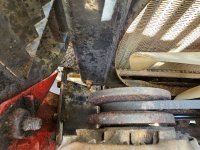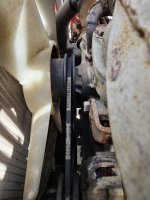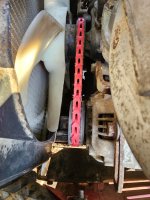Dmacleo
Veteran Member
- Joined
- Sep 11, 2020
- Messages
- 1,875
- Location
- Etna, Maine
- Tractor
- 2010 MF GC2400 Owner, 2012 MF1532 User
I also think it will work. been thinking about grabbing one for my 2010 GC2400 even thogh my belt still has lot of adjustment left in it.Worst case is actually, it fails at a really bad time, and or takes out the radiator when it lets go.
fortunately, we have CarlGlas stepping up, and volunteering to be a team MF test pilot.
I think we would all agree, that if it lasts 5 years, it's a fix?
I'll go on the record saying, I believe it will work that long.



